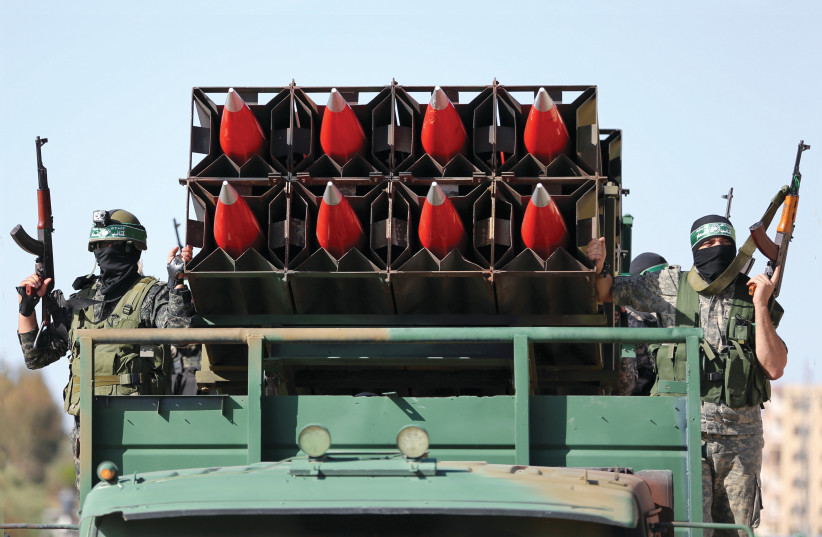It may be quiet along the Gaza border, but unless Israel truly commits to its new harsher policy, the next round of violence is only around the corner.

The sniper who shot the Israeli civilian along the Gaza Strip on Wednesday knew that he was risking dragging the Hamas-run enclave into another round of conflict if he missed his shot.
Israel’s military and defense establishment has promised, after all – and continues to repeat – that “what was no longer is.”
The 33-year-old man, an employee of a Defense Ministry contractor doing maintenance work near Kibbutz Nahal Oz on Israel’s recently completed border fence, was lightly injured in his foot by shrapnel.
In response, Israeli tanks fired artillery shells towards a Hamas post near Gaza City, wounding several farmers. The IDF also closed roads next to the border fence out of concern of additional attacks and ordered farmers to stay away from land near the border.
No group claimed responsibility for the attack, believed to have been deliberate. It was a tense evening and night in Israel’s South. Would Israeli jets carry out airstrikes?

Israel has carried out airstrikes in response to incendiary balloons launched from Gaza, so why not after a sniper attack that targeted an Israeli civilian?
Remember, “what was no longer is.”
But the night was quiet, there were no airstrikes and no rockets launched in return. On Thursday morning, farmers were once again allowed to work along the fence. It was as if nothing had happened.
So, it seems more like “what was continues to be.”
The IDF says that the intensity and targets of the strikes have increased since the May conflict. But for all of its talk, Israelis in the South remain concerned about what can happen along the border and whether they will be targeted next and need to run for shelter.
The incident comes during a relatively quiet time and amid intense efforts to reach a stable, long-term ceasefire between Israel and Hamas mediated by Cairo.
The IDF claims that it’s been the longest and most significant period of operational quiet in relation to the four most recent operations in the Strip.
In the six months following the operation, only five long-range rockets were fired from the Hamas-run coastal enclave towards Israel. In comparison, 22 rockets were fired following Protective Edge in 2014, some 196 following Cast Lead in 2009, and 76 were fired following Pillar of Defense in 2012.
But Hamas officials continue to hold large-scale military drills, fire rockets toward the sea in an attempt to improve their rocket arsenal, and verbally threaten Israel.
On Wednesday, senior officials from the group met with Hezbollah officials in the Lebanese capital of Beirut and vowed that they are preparing for a military confrontation with the Jewish state.
The sniper who hit the Israeli civilian did not do so because he woke up in the morning and felt like shooting an Israeli. That’s not how things work along the Gaza border. An order is given, either by Hamas or Palestinian Islamic Jihad, and an operative is sent to carry it out.
It was a deliberate attack, a test to see how Jerusalem would respond, and a warning from the terror groups. They wanted a clear message sent to Israel, that the next time it would be deadly.
It may be quiet along the Gaza border, but unless Israel truly commits to its new harsher policy, the next round of violence is only around the corner.
As reported by The Jerusalem Post
